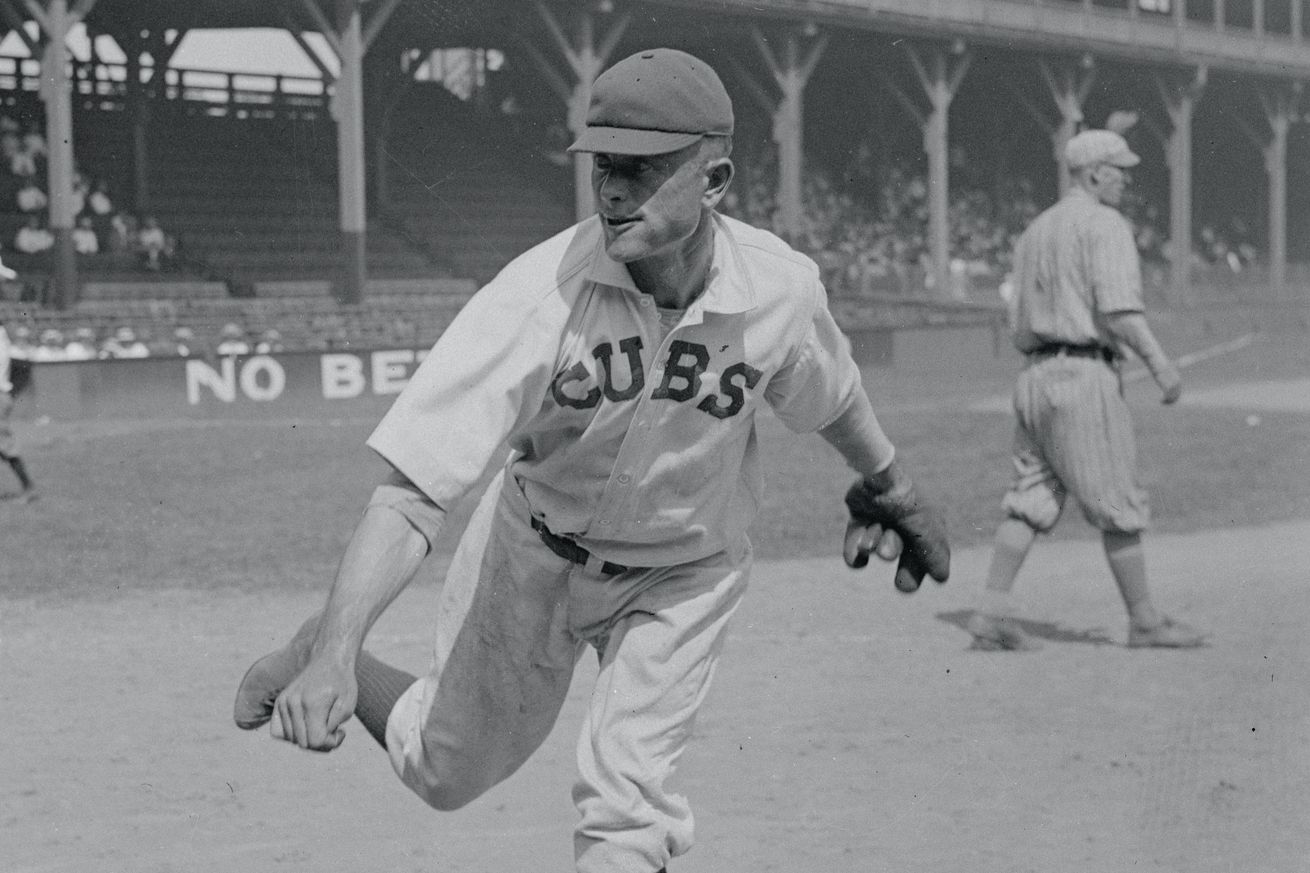
It was a transition year for the then-West Siders.
The Cubs finished with a losing record in 1915, their first since 1902. Attendance dropped to 217,058, seventh in the eight-team National League, as the Federal League Chicago Whales won that league title. It’s not known how many attended Whales games all year in 1915 at Weeghman Park on the North Side, but 34,212 — almost 16 percent of the Cubs’ season total at West Side Grounds — crowded the North Side ballpark on the season’s final day to see the Whales clinch the Federal League pennant.
No one there that day would have guessed that the next game played in the park at Clark & Addison would be a Cubs home game.
July 24: Signed Bob O’Farrell as an amateur free agent
I haven’t done many of these amateur free agent signings in this series, but I include this one for several reasons.
First, O’Farrell was a Chicago-area native (Waukegan) who lived almost his entire life in that town.
Second, O’Farrell played 12 years for the Cubs — not many can say that! — and batted .279/.364/.401 in 2,189 plate appearances, accumulating 14.3 bWAR. He played for the Cubs in the 1918 World Series and posted some very good years for the Cubs in the 1920s before he was traded to the Cardinals, where he was NL MVP in 1926. He was one of the better catchers in the league in the first three decades of the 20th Century.
Lastly, though, is the reason he was signed, per his SABR biography:
He was a member of the baseball team at Waukegan High School, and joined a Waukegan semipro team. Nobody wanted to be the catcher, so O’Farrell took the job because it was the sure way to stay on the field. He caught a break when the Waukegan team was hosting an exhibition game against the Chicago Cubs in 1915. O’Farrell caught the eye of Roger Bresnahan, the Cubs player-manager. Bresnahan was in the last year of a Hall of Fame career, and he knew talent behind the plate when he saw it. O’Farrell joined the Cubs that year, making his major league debut on September 5.
You don’t get a much better origin story than that.
August 29: Acquired Joe Schultz and $3,000 from the Dodgers for Larry Cheney
Well, this was a mistake. Cheney had been a very good pitcher for the Cubs earlier in the decade, and in fact, put together back-to-back 4+ bWAR seasons in 1912 and 1913. In the former year he was 26-10 with a 2.85 ERA. Only two Cubs pitchers have won that many games in a season since then: Grover Alexander (27 in 1920) and Charlie Root (26 in 1927).
But manager Bresnahan apparently tired of Cheney walking too many hitters and so arranged this trade. $3,000 in August 1915 is roughly equivalent to $93,000 today, not a huge amount of money baseball-wise but still something.
Schultz, though, wasn’t. He played in just seven games for the Cubs, going 2-for-8, and then the Pirates got him in the offseason for cash considerations.
Cheney, meanwhile, tamed the walk rate — a little — and went on to have several good season in Brooklyn, helping lead them to the NL pennant in 1916.
Bresnahan’s single season as Cubs manager was a disaster and he was let go by new ownership.
September 5: Acquired Alex McCarthy from the Pirates for cash considerations
McCarthy, an infielder, had played fairly well for the Pirates, but played in just 60 games for the Cubs in 1915 and 1916 and batted .251/.337/.330, at which time the Cubs sent him back to Pittsburgh for cash.
September 8: Acquired Phil Douglas from the Dodgers for cash considerations
Douglas, a righthanded pitcher, became a workhorse for the Cubs in 1917 when he appeared in a league-leading 51 games, starting 37 of them. He managed to post 3.0 bWAR despite leading the league in losses (20), home runs allowed (13) and wild pitches (11).
He did pitch in one game of the 1918 World Series, then was traded to the Giants the following year.
Getting O’Farrell = good. Trading Cheney for nothing = bad. Going to grade these “C”.
